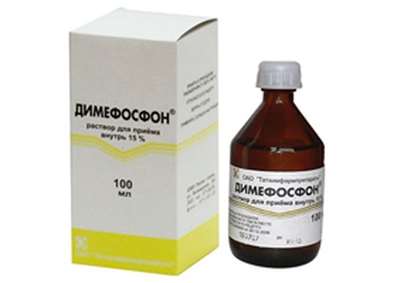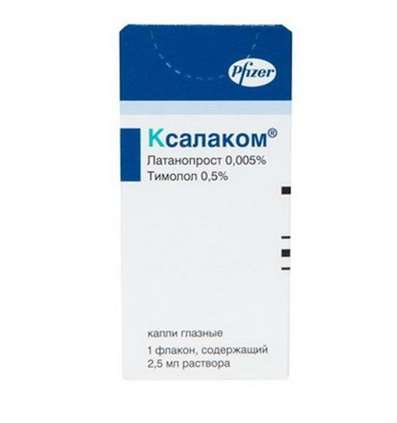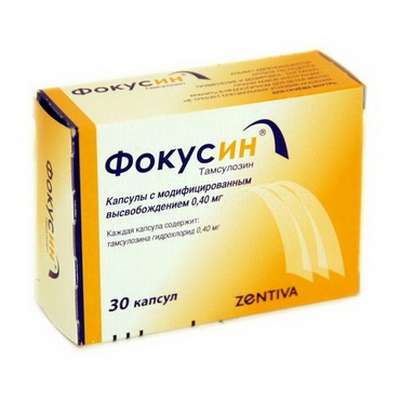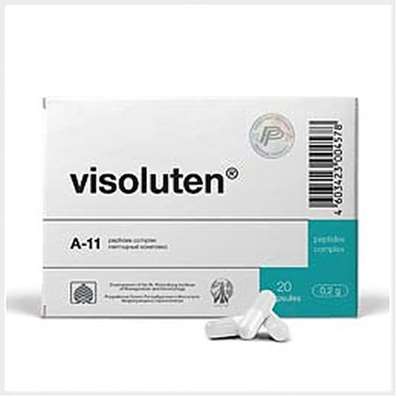Instruction for use: Acetylsalicylic acid
I want this, give me price
Trade name of the drug – Aspirin, Trombo ASS, Aspirin Cardio, Acecaradol, Upsarin UPSA, Acetylsalicylic acid, CardiAsk, Thrombol, Aspirin York , Acetylsalicylic acid tablets , Aspicor , ASK-Cardio, Aspirin Express, Aspirate Cardio, Acetylsalicylic acid MS, Acetylsalicylic acid-UBF, Acetylsalicylic acid Cardio, Anopyrin, Aspirin, Bufferin, Acetylsalicylic acid-Rusfar, Thrombogard 100, Acetylsalicylic acid "York", Acetylsalicylic acid-LEKT, Aspinate, Acylpyrine, Myristin, Taspir, Plolidol, Colfarit, HL-Pain, Plolidol, Acentrene, Acetylsalicylic acid Avexime, Aspinate, Walsh-asalgin, Aspidicard, Sanavosk
Russian name
Acetylsalicylic acid
The Latin name of the substance Acetylsalicylic acid
Acidum acetylsalicylicum (genus. Acidi acetylsalicylici)
Chemical rational name: 2- (Acetyloxy) benzoic acid
Gross formula
C9H8O4
Pharmacological group of substance Acetylsalicylic acid
Antiaggregants
NSAID - Salicylic acid derivatives
The nosological classification (ICD-10)
G43 Migraine:The pain of migraine; Migraine; hemiplegic migraine; Migraine headache; A migraine attack; Continuous headache; hemicrania
G54.3 Lesions of the thoracic roots, not elsewhere classified: Thoracic radicular syndrome
I20.0 Unstable angina: heberden disease; Angina pectoris; The attack of angina pectoris; recurrent angina; Spontaneous angina; Stable angina pectoris; Angina rest; Angina progressing; Angina mixed; Angina spontaneous; stable angina; Chronic stable angina; Angina Syndrome X
I21.9 Acute myocardial infarction, unspecified: Changes in left ventricle with myocardial infarction; Changes in the left atrium with myocardial infarction; Myocardial infarction; Myocardial infarction without Q wave; Myocardial infarction without signs of chronic heart failure; Myocardial infarction with unstable angina; Pirouette tachycardia with myocardial infarction
I24.1 Dressler's syndrome: post-pericardiotomy syndrome; Postinfarction syndrome (Dressler's syndrome)
I25 Chronic ischemic heart disease: Coronary heart disease on the background of hypercholesterolemia; Coronary heart disease is a chronic; Coronary heart disease; Stable coronary artery disease; Percutaneous transluminal angioplasty; Myocardial ischemia, arteriosclerosis; Recurrent myocardial ischemia
I25.5 Ischemic cardiomyopathy: Metabolic disorders in the myocardium; Ischemic cardiopathy
I25.8 Other forms of chronic ischemic heart disease
I26.9 Pulmonary embolism without mention of acute pulmonary heart: pulmonary infarction
I34.0 Mitral (valve) insufficiency: Rupture of the papillary muscles; Valvular mitral heart disease; Lack of left atrioventricular valve; Mitral valve insufficiency; Tightening valve (dangling) syndrome
I34.1 prolapse [prolapse] mitral valve: Rupture of papillary muscle; Barlow syndrome; Mitral valve prolapse syndrome; Mitral valve prolapse
I49.8 Other specified cardiac arrhythmias: atrial fibrillation; Arrhythmia Paroxysmal atrial; Atrial arrhythmia tachysystolic; sinus arrhythmia; Asynergia ventricular; Asynergia left ventricle; Corrigan's pulse; atrial fibrillation; atrial tachyarrhythmia; The migration of supraventricular pacemaker; Orthostatic changes in pulse; Disclaimer sinoatrial node; The paradoxical pulse; Paroxysm of atrial fibrillation; Paroxysmal atrial fibrillation; Paroxysmal dysrhythmia; Paroxysmal atrial-ventricular rhythm; Romano-Ward syndrome; trigemini; bigeminy
I63 Cerebral infarction: ischemic Stroke; Ischemic brain disease; Ischemic stroke; Ischemic stroke and its consequences; Ischemic cerebral stroke; Ischemic cerebrovascular accident; Ischemic brain damage; Ischemic brain damage; ischemic conditions; Cerebral ischemia; Acute hypoxia brain; Acute cerebral ischemia; Acute ischemic cerebrovascular accident; Acute cerebral infarction; Acute ischemic stroke; Acute period of ischemic stroke; Focal cerebral ischemia; Ischemic stroke; recurrent stroke; The syndrome of Morgagni-Adams-Stokes; Chronic cerebral ischemia; cerebrovascular stroke; embolic stroke; Ischemic brain damage
I74.9 Embolism and thrombosis of unspecified arteries: Arterial embolism; Arterial thrombosis; Acute arterial thromboembolism; Acute vascular occlusion; Acute occlusion of arteries; Acute arterial thrombosis; Acute thrombosis; Acute thrombosis of peripheral arteries; Thrombosis; Thrombosis in the extracorporeal circulation; Thrombosis of peripheral arteries; Peripheral vascular thrombosis; Shunttromboz; Embolism; Embolism of peripheral arteries; Occlusive Arterial Disease
I77.6 Unspecified Arteritis: Aortoarteriitis; Vasculitis; Non-atherosclerotic lesion of the coronary arteries
I80 Phlebitis and thrombophlebitis: Diseases of peripheral vessels; Inflammation of superficial veins; Inflammatory diseases of veins; Deep venous thrombophlebitis; The disease of veins; Disease of the veins of the lower extremities; Diseases of peripheral vessels; Migrating phlebitis; Insufficiency of veins of lower extremities; Exacerbation of chronic thrombophlebitis; Acute thrombophlebitis; Acute thrombophlebitis of superficial veins; Periphlebitis; Periflebit surface; Superficial inflammation of veins; Surface thrombophlebitis; Surface phlebitis; Thrombophlebitis; Deep vein thrombophlebitis; Thrombophlebitis superficial; Phlebitis; Phlebitis of deep veins; Phlebitis of superficial veins; Phlebopathy; Chronic thrombophlebitis; Endophlebitis
K08.8.0 * Toothache: Dentinal pain; Dentinal pains; Pain pulpitis; Anesthesia in dentistry; Pain syndromes in dental practice; Pain after removal of tartar; Pain when extracting a tooth; Toothache; Pain after dental interventions
M25.5 Pain in the joint: Arthralgia; Pain syndrome in musculo-articular diseases; Pain syndrome in osteoarthritis; Pain syndrome in osteoarthritis; Pain syndrome in acute inflammatory diseases of the musculoskeletal system; Pain syndrome in chronic inflammatory diseases of the musculoskeletal system; Pain in the joints; Soreness of the joints; Soreness of joints in severe physical exertion; Painful inflammatory joint damage; Painful conditions of the musculoskeletal system; Painful joint conditions; Painful traumatic affection of joints; Pain in the musculoskeletal system; Pain in Shoulder Joints; Pain in the joints; Joint pain; Joint pain with injuries; Musculoskeletal pain; Pain with osteoarthritis; Pain in the pathology of the joints; Pain in rheumatoid arthritis; Pain in chronic degenerative bone diseases; Pain in chronic degenerative joint diseases; Bone-joint pain; Joint pain; Arthritic pain of rheumatic origin; Articular pain syndrome; Joint pains; Rheumatic pain
M54.4 Lumbago with sciatica: Pain in the lumbosacral spine; Lumbago; Sciatica; Lumbar syndrome
M79.1 Myalgia: Myofascial pain syndromes; Pain syndrome in musculo-articular diseases; Pain syndrome in chronic inflammatory diseases of the musculoskeletal system; Pain in the muscles; Tenderness of muscles; Muscular soreness in severe physical exertion; Painful conditions of the musculoskeletal system; Pain in the musculoskeletal system; Pain in the muscles; Pain at rest; Muscle aches; Muscle pain; Musculoskeletal pain; Myalgia; Muscle pain; Muscle pain at rest; Muscle pain; Muscular pain of non-rheumatic origin; Muscle pain of rheumatic origin; Acute muscle pain; Rheumatic pain; Myofascial syndrome; Fibromyalgia
M79.2 Neuralgia and neuritis, unspecified: Pain syndrome with neuralgia; Brachialgia; Occipital and intercostal neuralgia; Neuralgia; Neuralgic pain; Neuralgia of intercostal nerves; Neuralgia of the posterior tibial nerve; Neuritis; Neuritis traumatic; Neurological Pain Syndromes; Neurological contractures with spasms; Acute neuritis; Peripheral neuritis; Post-traumatic neuralgia; Severe pain of a neurogenic nature; Chronic neuritis; Essential neuralgia
N94.6 Unspecified Dysmenorrhea: Pain in menstruation; Functional disorders of the menstrual cycle; Functional disorders of the menstrual cycle; Menstrual cramps; Menstruation disorder; Pain during menstruation; Painful irregular menstruation; Algodismenorea; Algomenorea; Pain syndrome with smooth muscle spasms; Pain syndrome with smooth muscle spasms (renal and biliary colic, intestinal spasm, dysmenorrhea); Pain syndrome with spasms of smooth muscles of internal organs (renal and biliary colic, intestinal spasm, dysmenorrhea); Disalgomenorrhea; Dysmenorrhea; Dysmenorrhea (essential) (exfoliative); Menstrual disorder; Menstruation painful; Metrorrhagia; Violation of the menstrual cycle; Menstrual irregularities; Prolactin-dependent disorder of the menstrual cycle; Prolactin-dependent disorder of menstrual function; Pain syndrome with spasms of smooth muscles of internal organs; Spastic dysmenorrhea; Primary disalgomenorrhea
R50 Fever of unknown origin: Malignant hyperthermia; Hyperthermia malignant
R51 Headache: pain in the head; cephalgia; Pain in sinusitis; Pain in the neck; Pain headache; Headache vasomotor origin; Headache vasomotor origin; Headache with vasomotor disturbances; Headache; Neurological Headache; Continuous headache
Z100 * CLASS XXII Surgical practice: Abdominal surgery; adenomectomy; Amputation; Coronary angioplasty; Angioplasty of the carotid arteries; Antiseptic skin treatment for wounds; Antiseptic Hand; Appendectomy; atherectomy; Balloon coronary angioplasty; Vaginal hysterectomy; The coronary bypass; Interventions in the vagina and cervix; Interventions on the bladder; Intervention in the mouth; Restoration and reconstructive surgery; Hand hygiene of medical personnel; Gynecologic surgery; Gynecological intervention; Gynecological surgery; Hypovolemic shock during operations; Disinfection of purulent wounds; Disinfection of wounds edges; Diagnostic intervention; Diagnostic procedures; Cervical Diathermocoagulation; Long-surgery; Replacing the fistula catheters; Infection in orthopedic surgery; Artificial heart valve; cystectomy; Short-term outpatient surgery; Short-term operation; Short surgical procedures; Krikotireotomiya; Blood loss during surgery; Bleeding during surgery and in the postoperative period; Kuldotsentez; laser photocoagulation; laser coagulation; retinal laser coagulation; Laparoscopy; Laparoscopy in Gynecology; CSF fistula; Small gynecological operations; Small surgical procedures; Mastectomy and subsequent plastic; mediastinotomy; Microsurgical operations on the ear; Mukogingivalnye operation; suturing; Minor surgery; neurosurgical operation; Immobilization of the eyeball in ophthalmic surgery; testectomy; pancreatectomy; Perikardektomiya; The period of rehabilitation after surgery; The period of convalescence after surgery; Percutaneous transluminal coronary angioplasty; Pleural thoracentesis; Pneumonia postoperative and posttraumatic; Preparation for surgical procedures; Preparation for surgery; Preparation of the surgeon's hands before surgery; Preparation of the colon for surgical procedures; Postoperative aspiration pneumonia in neurosurgical and thoracic surgery; Postoperative nausea; Postoperative bleeding; postoperative granuloma; postoperative shock; The early postoperative period; myocardial revascularization; Radiectomy; gastric Resection; bowel resection; uterine Resection; liver Resection; enterectomy; Resection of part of the stomach; Reocclusion of the operated vessel; Bonding tissues during surgical procedures; Removal of sutures; Condition after eye surgery; Condition after surgery; Condition after surgery in the nasal cavity; Condition after gastrectomy; Status after resection of the small intestine; Condition after tonsillectomy; Condition after removal of the duodenum; Condition after phlebectomy; Vascular surgery; Splenectomy; Sterilization of surgical instruments; Sterilization of surgical instruments; sternotomy; Dental surgery; Dental intervention in periodontal tissues; strumectomy; Tonsillectomy; Thoracic surgery; Thoracic surgery; total gastrectomy; Transdermal intravascular coronary angioplasty; Transurethral resection; Turbinektomiya; Removal of a tooth; cataract surgery; Removal of cysts; tonsillectomy; Removal of fibroids; Removing the mobile primary teeth; Removing polyps; Removing broken tooth; Removal of the uterus body; Removal of sutures; Fistula likvoroprovodyaschih ways; Frontoetmoidogaymorotomiya; Surgical infection; Surgical treatment of chronic limb ulcers; Surgery; The surgery in the anal area; The surgery on the colon; Surgical practice; The surgical procedure; Surgical interventions; Surgery on the gastrointestinal tract; Surgical procedures on the urinary tract; Surgical procedures on the urinary system; Surgical intervention of the genitourinary system; Surgical procedures on the heart; Surgical manipulation; surgery; Surgery on the veins; Surgical intervention; Vascular surgery; Surgical treatment of thrombosis; Surgery; cholecystectomy; Partial gastric resection; hysterectomy; Percutaneous transluminal coronary angioplasty; Percutaneous transluminal angioplasty; Coronary artery bypass; tooth Extirpation; Extirpation of milk teeth; pulpectomy; pulsative cardiopulmonary bypass; tooth Extraction; teeth Extraction; cataract extraction; Electrocoagulation; endourological intervention; episiotomy; Etmoidotomiya; Complications after tooth extraction
CAS code
50-78-2
Characteristics of substance Acetylsalicylic acid
White small needle crystals or light crystalline powder odorless or with a faint smell, slightly acidic taste. Slightly soluble in water at room temperature, soluble in hot water, easily soluble in ethanol, solutions of caustic and carbonic acid alkalis.
Pharmacology
Mode of action - anti-inflammatory, antipyretic, antiaggregational, analgesic.
It inhibits cyclooxygenase (COX-1 and COX-2) and irreversibly inhibits the cyclooxygenase pathway of arachidonic acid metabolism, blocks the synthesis of PG (PGA2, PGD2, PGF2αulf, PGE1, PGE2, etc.) and thromboxane. It reduces hyperemia, exudation, permeability of capillaries, activity of hyaluronidase, and limits the energy supply of the inflammatory process by inhibiting ATP production. Affects the subcortical centers of thermoregulation and pain sensitivity. Reduction of the content of PG (mainly PGE1) in the center of thermoregulation leads to a decrease in body temperature due to the expansion of the vessels of the skin and increased sweating. The analgesic effect is due to the influence on the centers of pain sensitivity, as well as the peripheral anti-inflammatory action and the ability of salicylates to reduce the algogenic effect of bradykinin. Reduction of thromboxane A2 in platelets leads to irreversible suppression of aggregation, somewhat dilates the vessels. Antiaggregant effect persists for 7 days after a single dose. A number of clinical studies have shown that a significant inhibition of the adhesion of blood platelets is achieved at doses up to 30 mg. Increases the fibrinolytic activity of plasma and reduces the concentration of vitamin K-dependent clotting factors (II, VII, IX, X). Stimulates the excretion of uric acid, because its reabsorption in the tubules of the kidneys is disturbed.
After ingestion sufficiently sucked. In the presence of enteric coating (resistant to the action of gastric juice and does not allow the absorption of acetylsalicylic acid in the stomach) is absorbed in the upper part of the small intestine. During absorption, it undergoes presystemic elimination in the intestinal wall and in the liver (deacetylated). The absorbed part is very quickly hydrolyzed by special esterases, so T1 / 2 acetylsalicylic acid is no more than 15-20 minutes. In the body it circulates (75-90% in association with albumin) and is distributed in tissues as an anion of salicylic acid. Cmax is reached after about 2 hours. With proteins of blood plasma, acetylsalicylic acid is practically not bound. When biotransformation in the liver formed metabolites, found in many tissues and urine. Excretion of salicylates is carried out mainly by active secretion in the renal tubules in unmodified form and in the form of metabolites. Excretion of unchanged substance and metabolites depend on the pH of urine (with alkalinization of urine ionization of salicylates increases, their reabsorption deteriorates and excretion increases significantly).
Indications for Acetylsalicylic acid
CHD (coronary heart disease), the presence of several risk factors for ÑHD, painless myocardial ischemia, unstable angina, myocardial infarction (to reduce the risk of repeated myocardial infarction and death after myocardial infarction), repeated transient ischemia of the brain and ischemic stroke in men, prosthetic heart valves (prophylaxis and treatment of thromboembolism) , Balloon coronary angioplasty and stent placement (reduced risk of re-stenosis and treatment of secondary coronary artery dissection), as well as in non-atherosclerotic lesions of the coronary arteries (Kawasaki disease), aortoarteritis (Takayasu's disease), valvular mitral heart defects and atrial fibrillation, mitral valve prolapse Prevention of thromboembolism), recurrent pulmonary embolism, Dressler's syndrome, lung infarction, acute thrombophlebitis. Fever with infectious and inflammatory diseases. Pain syndrome of mild and moderate intensity of different genesis, incl. Thoracic radicular syndrome, lumbago, migraine, headache, neuralgia, toothache, myalgia, arthralgia, algodismenorea. In clinical immunology and allergology, it is used in gradually increasing doses for prolonged "aspirin" desensitization and the formation of stable tolerance to NSAID in patients with "aspirin" asthma and "aspirin" triad.
According to indications rheumatism, rheumatic chorea, rheumatoid arthritis, infectious-allergic myocarditis, pericarditis - is currently used very rarely.
Contraindications for Acetylsalicylic acid
Hypersensitivity, incl. "Aspirin" triad, "aspirin" asthma; Hemorrhagic diathesis (haemophilia, von Willebrand's disease, telangiectasia), exfoliating aortic aneurysm, heart failure, acute and recurrent erosive and ulcerative gastrointestinal diseases, gastrointestinal bleeding, acute renal or hepatic insufficiency, initial hypoprothrombinemia, vitamin K deficiency, thrombocytopenia, thrombotic thrombocytopenic purpura , Deficiency of glucose-6-phosphate dehydrogenase, pregnancy (I and III trimester), breastfeeding, children and adolescence up to 15 years when used as an antipyretic agent (risk of developing Reye syndrome in children with fever in the background of viral diseases).
Restrictions to application
Hyperuricemia, nephrolithiasis, gout, gastric and duodenal ulcer (in the anamnesis), severe disorders of liver and kidney function, bronchial asthma, Chronic Obstructive Pulmonary Disease, polyposis of the nose, uncontrolled hypertension.
Pregnancy and breast-feeding
The use of large doses of salicylates in the first trimester of pregnancy is associated with an increased incidence of fetal development defects (cleft palate, heart defects). In the second trimester of pregnancy, salicylates can be administered only in the light of the risk and benefit assessment. The appointment of salicylates in the third trimester of pregnancy is contraindicated.
Salicylates and their metabolites penetrate into breast milk in small amounts. The accidental intake of salicylates during lactation is not accompanied by the development of adverse reactions in the child and does not require the cessation of breastfeeding. However, with prolonged use or administration in high doses, breast-feeding should be discontinued.
Side effect of Acetylsalicylic acid
From the cardiovascular system and blood (hematopoiesis, hemostasis): thrombocytopenia, anemia, leukopenia.
On the part of the gastrointestinal tract: NSAID-gastropathy (dyspepsia, pain in the epigastric region, heartburn, nausea and vomiting, severe bleeding in the digestive tract), a decrease in appetite.
Allergic reactions: hypersensitivity reactions (bronchospasm, laryngeal edema and urticaria), the formation of "aspirin" bronchial asthma and "aspirin" triad (eosinophilic rhinitis, recurrent nasal polyposis, hyperplastic sinusitis) on the basis of the hapten mechanism.
Other: impaired liver and / or kidney function, Reye's syndrome in children (encephalopathy and acute fatty liver disease with rapid development of liver failure).
With long-term use - dizziness, headache, tinnitus, decreased hearing acuity, visual impairment, interstitial nephritis, prerenal azotemia with increased blood creatinine and hypercalcemia, papillary necrosis, acute renal failure, nephrotic syndrome, blood diseases, aseptic meningitis, Symptoms of congestive heart failure, edema, increased levels of aminotransferases in the blood.
Interaction
Increases the toxicity of methotrexate, reducing its renal clearance, the effects of narcotic analgesics (codeine), oral antidiabetics, heparin, indirect anticoagulants, thrombolytic agents and platelet aggregation inhibitors, reduces the effect of uricosuric drugs (benzbromarone, sulfinpyrazone), hypotensive drugs, diuretics (spironolactone, furosemide) . Paracetamol, caffeine increase the risk of side effects. Glucocorticoids, ethanol and ethanol containing drugs increase the negative effect on the mucosa of the gastrointestinal tract and increase the clearance. Increases the concentration of digoxin, barbiturates, lithium salts in plasma. Antatsidy containing magnesium and / or aluminum, slow down and worsen the absorption of acetylsalicylic acid. Myelotoxic drugs increase manifestations of hematotoxicity of acetylsalicylic acid.
Overdose
May occur after a single dose of a large dose or with prolonged use. If a single dose is less than 150 mg / kg, acute poisoning is considered easy, 150-300 mg / kg - moderate, with higher doses - heavy.
Symptoms: salicylism syndrome (nausea, vomiting, tinnitus, visual impairment, dizziness, severe headache, general malaise, fever - a poor prognostic sign in adults). Heavier poisoning - stupor, convulsions and coma, noncardiogenic pulmonary edema, severe dehydration, disturbances of KHS (at first - respiratory alkalosis, then - metabolic acidosis), renal failure and shock.
In chronic overdose, the concentration determined in plasma is poorly correlated with the severity of intoxication. The greatest risk of developing chronic intoxication is observed in elderly people with a dose of more than 100 mg / kg / day for several days. In children and elderly patients, the initial signs of salicylism are not always noticeable, so it is advisable to periodically determine the concentration of salicylates in the blood. A level above 70 mg% indicates moderate or severe poisoning; Above 100 mg% - about extremely severe, prognostically unfavorable. For moderate poisoning, hospitalization is necessary for at least 24 hours.
Treatment: provocation of vomiting, the appointment of activated carbon and laxatives, monitoring of KHS and electrolyte balance; Depending on the state of metabolism - the introduction of sodium bicarbonate, sodium citrate solution or sodium lactate. The increase in reserve alkalinity increases the excretion of acetylsalicylic acid by alkalinizing urine. Urine alkalization is indicated with salicylate levels above 40 mg%, provided by intravenous infusion of sodium hydrogen carbonate - 88 meq per 1 liter of 5% glucose solution, at a rate of 10-15 ml / kg / h. Recovery of bcc and induction of diuresis (achieved by the introduction of bicarbonate in the same dose and dilution, repeat 2-3 times); It should be borne in mind that intensive fluid infusion of the elderly patient can lead to pulmonary edema. It is not recommended to use acetazolamide for alkalinization of urine (can cause acidemia and enhance the toxic effect of salicylates). Hemodialysis is indicated at a salicylate level of more than 100-130 mg%, and in patients with chronic poisoning - 40 mg% and lower in the presence of indications (refractory acidosis, progressive deterioration, severe CNS damage, pulmonary edema and kidney failure). With pulmonary edema - IVL with a mixture enriched with oxygen, in the positive pressure mode at the end of exhalation; To treat edema of the brain, hyperventilation and osmotic diuresis are used.
Routes of administration
Inside.
Precautions for substance Acetylsalicylic acid
It is undesirable to use together with other NSAIDs and glucocorticoids. For 5-7 days before surgery, it is necessary to cancel taking (to reduce bleeding during surgery and in the postoperative period).
The likelihood of NSAID-gastropathy decreases with the appointment after meals, the use of tablets with buffer additives or covered with a special enteric coating. The risk of hemorrhagic complications is considered to be the lowest when applied at doses <100 mg / day.
It should be borne in mind that in predisposed patients acetylsalicylic acid (even in small doses) reduces the excretion of uric acid from the body and can lead to the development of an acute attack of gout.
During prolonged therapy, it is recommended to perform a regular blood test and examine the feces for hidden blood. In connection with the observed cases of hepatogenic encephalopathy is not recommended for the management of febrile syndrome in children.

 Cart
Cart





